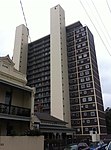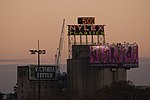Melbourne Girls Grammar
Melbourne Girls Grammar (also known as MGGS, and earlier as MCEGGS), is an independent, Anglican, day and boarding school for girls, located in South Yarra, an inner city suburb of Melbourne, Victoria, Australia. Founded in 1893 by Emily Hensley and Alice Taylor, the school has a non-selective enrolment policy and caters for 1,010 students from Early Learning to Year 12, including 90 boarders. It was originally known as Merton Hall and then as Melbourne Church of England Girls Grammar School.Melbourne Girls Grammar is affiliated with the Association of Heads of Independent Schools of Australia (AHISA), the Junior School Heads Association of Australia (JSHAA), the Alliance of Girls' Schools Australasia (AGSA), the Association of Independent Schools of Victoria (AISV), the Australian Boarding Schools Association (ABSA), and is a founding member of Girls Sport Victoria (GSV).
Excerpt from the Wikipedia article Melbourne Girls Grammar (License: CC BY-SA 3.0, Authors).Melbourne Girls Grammar
Tan Track, Melbourne Melbourne
Geographical coordinates (GPS) Address Website External links Nearby Places Show on map
Geographical coordinates (GPS)
| Latitude | Longitude |
|---|---|
| N -37.831388888889 ° | E 144.985 ° |
Address
Melbourne Girls Grammar School
Tan Track
3004 Melbourne, Melbourne
Victoria, Australia
Open on Google Maps









